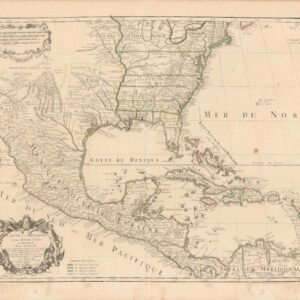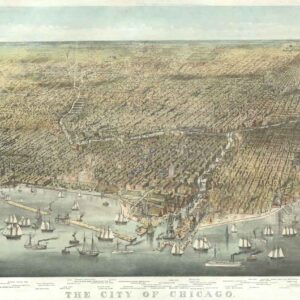The greatest and most impressive 19th-century map of Connecticut.
Road and Property Map showing the Towns of Stamford and Greenwich Conn. Together with Surrounding Territory Compiled from Actual Surveys, Private Plans & Official Records…
$24,500
1 in stock
Description
This rare and very large-scale 1890 map, consisting of four sheets mounted together, provides a plat for the towns of Greenwich and Stamford in Fairfield County, Connecticut, near the border with New York.
Both town centers are outlined in red and divided from each other, and from the New York line / Portchester, by red and green lines. Various sections or neighborhoods of Greenwich are labeled, such as Glenville and Cos Cob, though not what is now called “Old Greenwich,” east of the Mianus River, where most of the town’s oldest homes can be found. Sewers, water mains, and gas mains are also indicated, reminding us that these were relative novelties at the time. The map is so detailed that it includes barns and property stables. Soundings, hazards, reefs, and coastal marshes are noted on the water.
Property owners are recorded throughout. Multiple members of prominent families, such as the Meads in Greenwich and the Hoyts in Stamford (both descended from the earliest European settlers of the region), can be easily located. However, around the turn of the 20th century, such land-rich families sold off their property to wealthy urbanites seeking a county estate, as both towns became something of a resort for New Yorkers. For instance, near the town center of Greenwich is a large piece of property belonging to William Rockefeller, the younger brother of John D. and a co-founder of Standard Oil. The Rockefellers eventually bought multiple properties in Greenwich, turning one of them into a massive 19,200 sq. ft. mansion, one of the ‘great estates’ that became fashionable at the turn of the century.
Through the arrival of more migrants from New York and the subdivision of old estates, the towns changed considerably over the course of the 20th century. But some streets retain the names seen here (such as Cat Rock Rd. in Cos Cob), while the paths of others (named or not) have not changed significantly. One major addition was the construction of the Connecticut Turnpike in the 1950s, quickly becoming part of Interstate 95, which largely follows the coastline.
New and proposed railroads
The New York, New Haven and Hartford Railroad cuts across the map; in the years after this map’s publication, the company would expand rapidly as its investors, especially J.P. Morgan, sought to use it as a vehicle to dominate the rail network of the northeastern U.S. (in 1914, nearly two dozen executive members of the railway were convicted of conspiracy to monopolize interstate commerce). The arrival of this railroad in the mid-19th century changed the area significantly, making it easily accessible from Manhattan. Conversely, the proposed Ridgefield and New York Railroad seen at left was never constructed; the already well-established Danbury and Norwalk Railroad cut off the potential competition by building a branch line parallel to the proposed route. Greenwich and Stamford both contain “horsecar railroads” here, a predecessor to the electrified streetcars common in the following decades.
Census
This map was prepared by Miller Robbins, Jr. and Forsey Breou, published by Miller Robbins Jr. & Co., and lithographed by A. H. Mueller in 1890. It is noted in the OCLC among the holdings of five institutions: Yale University, the Greenwich Library, the Connecticut Historical Society, the University of Michigan, and the University of Wisconsin-Milwaukee.
Cartographer(s):
Condition Description
Excellent. Original color, refreshed. Published folding, now four sheets joined as one. Backed on archival tissue for support, few minor areas of expert repairs.
References


![[AMERICAN REVOLUTION] Boston, George Washington, Franklin, Philadelphia, Washington, D.C.](https://neatlinemaps.com/wp-content/uploads/2024/05/NL-02090a_thumbnail-300x300.jpg)
